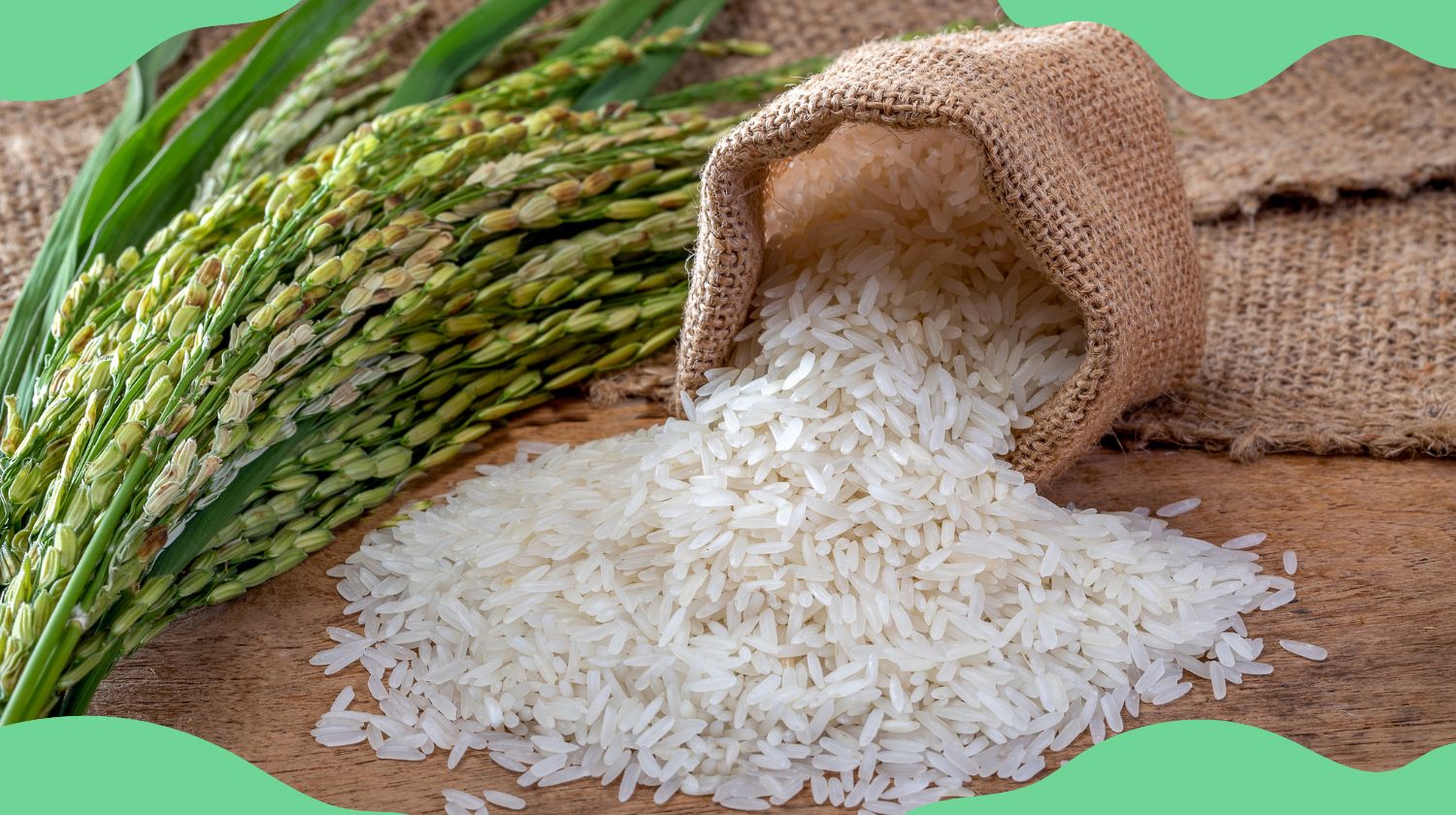Is Rice Paleo? Let’s Find The Answer From Experts 2024

You might’ve heard all about the paleo diet and how it’ll help you lose weight and feel great.
But then you eye your favorite sushi roll and remember — don’t you have to give up grains and everything else that’s carb-rich and delicious?
Except, healthy rice dishes exist. And it’s not like you can compare it to a greasy bacon cheeseburger.
So, do you have to give it up, or is rice actually paleo-friendly?
Read on to discover all the do’s and don’ts of the paleo diet, plus tasty substitutions that won’t leave you feeling restricted.
Can You Eat Rice On A Paleo Diet?
Technically, rice isn’t allowed on a paleo diet.
Supporters of eating paleo say we should eat as humans did millions of years ago before grains came into the picture.
In place of rice, you can make vegetables like cauliflower or broccoli rice almost replicating how it looks and tastes. Getting rid of grains might help you eat more vegetables and increase your nutrient intake, so it’s not all bad.
At the end of the day, it’s up to you how strictly you’d like to go grain-free.
What Is The Paleo Diet?
The paleo diet is all about imitating what our ancestors ate in the Paleolithic era. That’s the time in very early human history when we just started using stone tools — about 2.6 million years ago.[1]
Back then, there was no such thing as factories and packaged goods. Historical records show[2] that we only started storing and using grains about 11,000 years ago. And considering the length of human civilization, that’s extremely recent.
Because of all the recent health issues like a sharp rise in diabetes, gastrointestinal issues, and obesity, doctors began studying the origins of these conditions. Along with a sedentary lifestyle, minimal time in nature, and a lower sense of community, our diets have the biggest impact on our health. And while we can’t completely change our modern way of life, the way we eat is something we can work on.
Gastroenterologist Dr. Voegtlin was one of many who noticed the connection between eating[3] more processed foods and grains and health problems. He started spreading the word that eating like our ancestors is more in line with our genetic makeup. From there, books started coming out in the early 2000s outlining the paleo diet — only lean meats, fruits, vegetables, nuts, and seeds.
Paleo Diet Risks
Since you’re eliminating grains, starchy vegetables, and dairy, you might not get enough fiber or calcium if you don’t increase other food sources.
You can still get calcium[4] from plant sources like kale, spinach, and almonds — but be aware that phytates,[5] a plant compound, can interfere with the absorption. But sardines, and some other fish, are a great source since we can eat their calcium-rich bones. You can even buy calcium-fortified nut milk, as well as vegan yogurt for extra probiotics.
As for fiber,[6] you can get plenty if you add vegetables and fruit instead of your grains and starches. For example, broccoli, cauliflower, carrots, raspberries, and apples are all great sources and low in sugar.
But if you’re worried about your nutrient intake, you can take a multivitamin to be sure you’re getting everything your body needs. There are even fiber and paleo supplements that might help.
Why You Should Be Concerned About Rice
While the paleo diet focuses on whole foods, it considers grains too new for humans and possibly inflammatory.[7] And, of course, no matter if you eat white, brown, or wild rice, it’s still a grain.
So, going paleo means eating a more carnivore diet and eliminating newer foods, like legumes, potatoes, dairy, and sugar.
But what is it that makes these foods inflammatory?
Lectins
Lectins[8] are proteins that bind to carbs. They’re part of a plant’s defense mechanism against pests and predators. For example, it’s toxic to some insects and animals and even disrupts pathogens like bacteria and fungi from infecting them.
And when it comes to humans, some of us can also react negatively to lectins — possibly without even realizing it. Lectins might:
- Increase inflammation.
- Cause digestive discomfort.
- Interfere with the absorption of other nutrients.
So, does white or brown rice have lectins?
Yes, in fact, all plants have lectins to some degree, so it’s impossible to eliminate them completely. Fortunately, cooking plants can almost eliminate or at least severely reduce the amount of lectins.
But, paleo supporters advise against legumes, grains, and nightshade vegetables since they tend to have the highest amount of lectins.
Popular Paleo Rice Substitutes
If you’re ready to try giving up grains, there are a ton of recipes and options available, like:
- Cauliflower or broccoli rice: Pulse cauliflower or broccoli florets in a food processor until they look like rice grains. You can then saute or steam it and add some herbs for extra flavor.
- Zucchini noodles: Invest in a spiralizer; they’re not usually expensive, and have fun pushing every vegetable you can think of through it. You’ll get noodle-like strands that can replace any grain, even pasts. They’re perfect for stir-fries, salads, and side dishes.
- Shredded cabbage: You can shred cabbage to create rice-like pieces or even leave it chunkier. It goes great with stir-fries or as a bed for curry or stews.
- Nut and seed mix: You might be surprised by how versatile different nuts and seeds are and how much flavor they add. You can chop whatever you’ve got and add them as a topping or stir-fries. You can even grind them into flour for added thickness to your sauces and stews.
These are all low-carb and paleo-friendly options. But, if you’re craving something starchy, you could even make carrot or butternut squash rice. Plus, sweet potato fries baked in the oven are incredibly satisfying.
Of course, just be mindful of any co-existing health conditions, allergies, or recommendations from your doctor before changing your diet completely and eliminating food groups.
How To Add Rice To Paleo Diet
In short, you can’t really add rice to a strict paleo diet. But, if you want a more balanced paleo diet version, you can be flexible every now and then. A serving of whole-grain rice, or white rice, can still be part of an overall paleo lifestyle and meal plan.
After all, eating rice every now and then isn’t the worst thing to eat. Especially when you compare it to processed foods!
Some studies even show whole grains can reduce the risk of chronic diseases[9] like diabetes, obesity, and cardiovascular diseases.
Final Thought
So, can you eat rice on paleo? Technically, no. Even gluten-free grains are eliminated.
The paleo diet is all about unprocessed foods and recommends against foods newer to humans, like grains, potatoes, legumes, and dairy. They’re considered too inflammatory, and claim they may lead to chronic diseases.
Of course, it’s very strict, and evidence still doesn’t fully support a paleo diet. Also, you have to be mindful of your food sources to get enough fiber and calcium.
And in the end, restrictive dieting can stress people out and lead to eating disorders[10] and eventual weight gain. And it’s not very often you go to a restaurant and only see starch-free vegetables and lean meats on the menu!
So, no, eating rice on a paleo diet isn’t advised. But a bit of it probably won’t devastate your diet. Plus, you might be just a bit happier overall if you let yourself eat your favorite rice dish now and then.
+ 10 sources
Health Canal avoids using tertiary references. We have strict sourcing guidelines and rely on peer-reviewed studies, academic researches from medical associations and institutions. To ensure the accuracy of articles in Health Canal, you can read more about the editorial process here
- Toth, N. and Schick, K. (2013). Overview of Paleolithic Archaeology. [online] pp.1–21. doi:https://doi.org/10.1007/978-3-642-27800-6_64-4.
- In This Issue. (2009). [online] 106(27), pp.10873–10874. doi:https://doi.org/10.1073/iti2709106.
- Semih Ötleş and Buket Yalcin Sahyar (2016). Protein-based dietary supplements as nutraceuticals. [online] doi:https://doi.org/10.1016/b978-0-12-804305-9.00019-1.
- The Nutrition Source. (2020). Calcium. [online] Available at: https://www.hsph.harvard.edu/nutritionsource/calcium/.
- Gupta, R.K., Shivraj Singh Gangoliya and Nand Kumar Singh (2015). Reduction of phytic acid and enhancement of bioavailable micronutrients in food grains. [online] 52(2), pp.676–684. doi:https://doi.org/10.1007/s13197-013-0978-y.
- Mayo Clinic. (2021). How much fiber is found in common foods? [online] Available at: https://www.mayoclinic.org/healthy-lifestyle/nutrition-and-healthy-eating/in-depth/high-fiber-foods/art-20050948.
- Whalen, K.A., McCullough, M.L., W. Dana Flanders, Hartman, T.J., Judd, S.E. and C. Michael Hall (2016). Paleolithic and Mediterranean Diet Pattern Scores Are Inversely Associated with Biomarkers of Inflammation and Oxidative Balance in Adults. [online] 146(6), pp.1217–1226. doi:https://doi.org/10.3945/jn.115.224048.
- The Nutrition Source. (2019). Lectins. [online] Available at: https://www.hsph.harvard.edu/nutritionsource/anti-nutrients/lectins/.
- Shao, Y. and Bao, J. (2015). Polyphenols in whole rice grain: Genetic diversity and health benefits. [online] 180, pp.86–97. doi:https://doi.org/10.1016/j.foodchem.2015.02.027.
- Lowe, M.R., Doshi, S.D., Katterman, S.N. and Feig, E.H. (2013). Dieting and restrained eating as prospective predictors of weight gain. [online] 4. doi:https://doi.org/10.3389/fpsyg.2013.00577.



